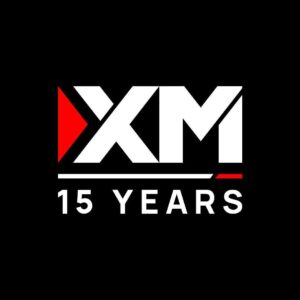
This week in the stock market, attention turned towards a development in the cryptocurrency sector. Alex Svanevik, a recognized industry analyst, brought to light a near-equal revenue outcome between two key blockchain networks: Ethereum and Solana. The comparison was based on transaction fee collection, a detail that did not go unnoticed by traders and market watchers.
To be specific, Ethereum’s recent revenue reached an estimated $8.90 million—only slightly above Solana’s $8.88 million. The near match in earnings hints at changes in how users engage with blockchain networks and where investors might be placing their bets, both in digital assets and on the stock market.
Revenue Breakdown: Ethereum and Solana in Focus
Transaction fees play a central role in how blockchains bring in revenue. Often, the figure serves as a measure of network demand. Ethereum, long established as a hub for DeFi activity and NFT projects, has built a reputation for high transaction fee revenue. Yet lately, Solana has been narrowing the difference, boosted by its high transaction speed and much lower costs.
| Blockchain | Revenue (USD millions) | Impact on Stock Market Sentiment |
|---|---|---|
| Ethereum | 8.90 | Signals continued leadership but intensifying competition from Solana |
| Solana | 8.88 | Marks an acceleration in user adoption and developer interest |
Stock Market Perspective: What Convergence Reveals
The stock market often acts as a barometer for how financial and technological trends meet. Here, the convergence of fee revenue between Solana and Ethereum stands as a signal. It points to shifting user preferences, improvements in network design, and wider changes in investor sentiment spanning both cryptocurrency and the more familiar equities arena.
“This near revenue parity emphasizes how blockchain networks like Solana are narrowing the competitive gap, potentially altering investment flows across both cryptocurrency markets and related stock market sectors,” says Alex Svanevik. (Source)
Ethereum has often enjoyed a first-mover advantage, supported by its established developer base and broader usage. Solana, however, brings high-speed processing and remarkably low transaction fees—an approach that is appealing to both users and dApp builders. That change is now visible in shifting trading volumes, token valuations, and even the movement of associated tech stocks in public markets.
Solana’s Growing Role in Investor Choices
The fact that Solana nearly matched Ethereum’s fee revenue is prompting new considerations for investors. Fund managers and individual traders have started to weigh the fundamentals of different blockchains, taking into account not only their technical properties but also the patterns of revenue generation.
- Network throughput: Solana supports over 50,000 transactions per second, which contrasts sharply with Ethereum’s figures.
- Transaction costs: Fees on Solana are much lower and may favor the growth of new applications.
- Developer ecosystem: The expansion of tools and developer resources hints at a network prepared for broader growth.
Looking Ahead: 2025 and Beyond
Recent projections have begun to sketch out what 2025 might hold for both blockchains. A report from Messari estimates that Ethereum’s revenue could climb to nearly $25 million per day by the end of next year. This expectation rests on Ethereum’s plans for scaling and further adoption of DeFi solutions.[1]
There are similar ambitions for Solana. Coin Metrics projects a rise in Solana’s daily revenue to around $20 million in 2025, citing the network’s appeal to high-frequency traders and continued improvements in performance and security. Meanwhile, a Deloitte research note anticipates the revenue difference between blockchains will keep getting smaller, as technology advances and each network expands its ecosystem.[2], [3]
On a broader level, Binance Research predicts the blockchain industry as a whole will grow by 30% per year until 2025, with new applications and increased institutional participation supporting higher network revenues over time.[4]
Historical Notes: Patterns and Cycles
Those who have tracked digital assets through previous years might recall similar shifts. When DeFi activity spiked in 2021, for example, Ethereum’s fee revenues moved upward, often mirroring token price rallies and trading momentum. These fee metrics can serve as a useful—and often timely—proxy, much like quarterly earnings do for traditional stocks.
Now, with Solana posting comparable revenues, some investors are reconsidering how they balance their exposure to new and established crypto projects. The competitive landscape between these two networks may echo classic rivalries in the technology sector—think early Internet browser wars, but with far greater sums at stake.
Forward Outlook and Market Strategies
How might these trends play out for those active in the stock market? There are a few plausible outcomes:
- Rising valuations for companies with deep connections to blockchain technology, as trading and development grow more active.
- Greater capital moving into crypto assets and related stocks, reflecting stronger confidence in Solana’s capacity for growth and Ethereum’s established role.
- Portfolio strategies that seek to balance exposure to both large and up-and-coming blockchain ecosystems.
It would not be surprising to see a period of intensified competition that ultimately spurs both networks to enhance their offerings—and that degree of rivalry may benefit investors in both crypto tokens and the stocks of firms involved in related technologies.
Examining Blockchain Metrics for Stock Market Relevance
For anyone investing in the stock market while keeping an eye on blockchain developments, a deeper understanding of transaction fee structure and network performance can be helpful. Fees flow to validators and miners, but they also reflect wider activity on the platform and serve as signals of engagement.
At present, Ethereum shows a slight edge in revenue. But Solana’s nearly identical figure suggests a closing window between the networks. This evolving dynamic raises questions for diversifying investments among stocks tied to blockchain technology, crypto exchanges, or related sectors.
Key Metrics at a Glance
| Metric | Ethereum | Solana | Stock Market Implication |
|---|---|---|---|
| Transaction Fee Revenue (Weekly) | $8.90M | $8.88M | Near identity in revenue attracts investor interest |
| Transactions per Second (TPS) | 15-30 TPS (approx.) | 50,000+ TPS | Higher throughput often means more scalable usage |
| Average Transaction Cost | $1 – $5 | $0.00025 | Lower costs may drive higher application volume |
Financial Markets and the Expanding Role of Blockchain
Ethereum and Solana’s revenue numbers offer more than a snapshot of network usage. For those participating in traditional markets, these results help trace how blockchain protocols are shaping trends in stocks, fintech, and beyond.
Some institutional investors now treat transaction fee data as part of their research process. The figures guide decisions related to crypto-equity investments, token-backed instruments, and the design of products bridging digital assets and traditional securities.
Fee parity between Ethereum and Solana could mark a turning point. The contest for network dominance is playing out not only among tokens and dApps, but also in the valuation of publicly traded companies developing or supporting blockchain infrastructure.
Final Thoughts: Tracking Blockchains in the Stock Market
Shifts in revenue between Ethereum and Solana capture the attention of seasoned traders and retail investors alike. The recent narrowing of revenue margins is one to watch. As networks grow in complexity and the user base expands, the interaction between blockchain data and stock market trends is bound to become even more pronounced.
The lesson for investors: monitoring metrics such as transaction fee revenues, in both real time and through forward-looking projections, may give valuable input for portfolio decisions spanning crypto markets as well as traditional equity holdings.

















